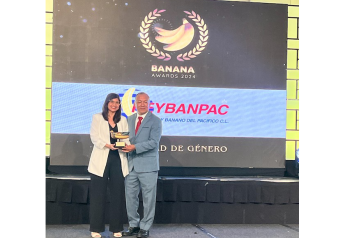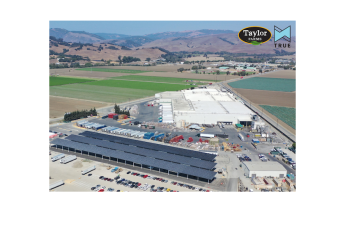New Sacramento museum educates residents about farms’ water needs

Despite recent heavy rains, California is still experiencing one of its worst droughts in history, so reminding the public and policy makers that food does not grow without water is a critical need for the state’s agricultural community. That’s why Mike Wade and Farm Credit were excited to see the new SMUD Museum of Science and Curiosity open recently.
The $52 million state-of-the-art science center in Sacramento contains dozens of interactive exhibits that allows visitors to explore the wonders of science, technology, engineering and math and specifically address global and local issues relating energy, water, health, nature, space and design engineering.
Wade, executive director of the California Farm Water Coalition, said the three water exhibits the coalition is sponsoring bring home the fact that water is essential to grow our food and that California farmers are leading the world in conserving the precious resource.
“The exhibits have been very popular with museum visitors so far. Both students and adults have been taking turns finding out about the water it takes to grow our food and how farmers use the latest technology to conserve it,” Wade said.
“It’s always been part of our mission to educate people about the connection between farm water and their food supply. It’s important that everyone know that farmers are using water in an efficient manner and that as consumers, we all depend on farmers.”
American AgCredit, CoBank and Farm Credit West collectively pledged $75,000 over five years to help build and maintain the exhibits. The organizations are part of the nationwide Farm Credit System – the largest provider of credit to U.S. agriculture.
Wade said one exhibit consists of a touchscreen monitor on which people can drag food items from an illustrated list to your plate. Once they’ve made their selections, they can click the “eat it” button and the display will show the nutrition value and water demand of the foods on the plate. And that in turn shows participants how close they are to meeting their nutritional needs and the amount of water needed to produce that food.
Mark Littlefield, President and CEO of Farm Credit West, said the exhibit will be an important learning tool for visitors.
“The exhibit helps people understand that it takes a significant amount of water to grow the food we eat. It’s eye-opening to select the right foods to eat and then see at the end of the game how much water it takes to grow that food,” he said.
Another interactive exhibit demonstrates how technology is helping farmers use just the right amount of water to grow their crops, said Curt Hudnutt, President and CEO of American AgCredit.
“The More Crop Per Drop exhibit lets visitors irrigate their field with a set water budget without giving them any information about how much water the crops need,” Hudnutt said. “Then they can try again after getting information from water sensors and then a third time with additional information from drones that pinpoint areas that have enough water and areas that need more. In most cases, participants will do better with additional information, making this a great way of showing how farmers are already at the cutting edge of technology.”
Wade said the third exhibit is a map of California that shows the state’s major water projects and conveyance facilities.
“The highlight here are quotes from five farmers from the five major ag regions who describe how storage and conveyance have made it possible for them to farm,” he said.
The exhibits will be on display for 15 years at the museum, located in a building that once housed a century-old powerplant on the banks of the Sacramento River. The building was rebuilt and modernized and a new wing added that includes a planetarium, offices, and a café. The agricultural water interactive exhibits are part of the Water Challenge Gallery, located in the historic power plant section of the museum.
Wade said Farm Credit’s support has been extremely valuable in making the exhibits a reality.
“None of this would be possible without Farm Credit and the other donors giving so generously,” he said. “Educating the public is a shared responsibility of the entire agricultural industry, and Farm Credit is leading by example.”







